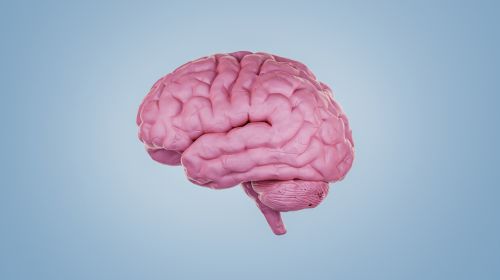Parkinson’s is a progressive disease in which certain nerve cells in the brain are damaged. Typical symptoms include a decline in the ability to move and trembling at rest. How does Parkinson’s occur and what helps against it?
- © Getty Images/sruilk
Quick overview: Frequently asked questions and answers
What are signs of Parkinson’s? The main symptoms of Parkinson’s are lack of movement, muscle stiffness, tremors at rest, postural instability and unsteady gait.
Can Parkinson’s be cured? There is no cure for Parkinson’s disease. However, the symptoms can be alleviated with medication. If these don’t work, surgery is also an option. Physiotherapy, occupational therapy, speech therapy and, if necessary, psychotherapy are also recommended.
How long can you live with Parkinson’s? Today, life expectancy does not differ significantly from that of a healthy person, especially in the case of idiopathic Parkinson’s syndrome.
How can Parkinson’s be prevented? Since the causes of idiopathic Parkinson’s syndrome are not known, its development cannot be prevented with certain measures or behaviors.
Article contents at a glance:
What is Parkinson’s?
Parkinson’s disease (also Parkinson’s disease) is a progressive disease of the nervous system. It leads to the destruction of nerve cells in the black substance (substantia nigra) in the brain, which are responsible for the production of dopamine.
Dopamine is a so-called neurotransmitter: This messenger substance ensures that electrical signals are transmitted from one nerve cell to the next. Since the nerve cell damage in Parkinson’s occurs primarily in areas of the brain that are responsible for movement control, Parkinson’s disease manifests itself through movement disorders and typical muscle tremors. That is why the disease is also colloquially known as shaking paralysis.
How common is Parkinson’s disease?
Parkinson’s is the most common neurological disease in older people: In Germany, around 220,000 people live with Parkinson’s disease. Every year between 10 and 20 out of 100,000 people become ill again. The frequency increases with age. The diagnosis is usually made between the ages of 60 and 65.
Parkinson’s: What are the typical signs?
Parkinson’s disease begins gradually, as the lack of dopamine in the brain only becomes noticeable after years or decades. The first signs or early symptoms are often not associated with Parkinson’s and are therefore not treated accordingly. The early symptoms of Parkinson’s include:
- Muscle pain in the neck, back, arms and legs
- Difficulty getting up
- Slowing down of movements
- Stiffness of the limbs
- sleep disorders
- depressive mood
- Change in facial expression and writing
- Disturbances of the sense of smell and taste
- reduced mental flexibility
- increasing anxiety
The movement restrictions usually start on one side and increase over time.
Main symptoms of Parkinson’s disease
As the disease progresses, the four main symptoms of Parkinson’s come to the fore:
Lack of exercise (akinesia): The movements are slowed down and the possibilities for movement are reduced. Those affected only take a few steps, and the first step in particular often fails. Facial expressions are also reduced, speech becomes monotonous, and swallowing is difficult
Muscle stiffness (rigor): Arms, legs and neck are constantly tense, causing muscle pain. If the limbs are moved by a second person, the so-called “gear phenomenon” occurs: the body part can only be moved jerkily and always a small distance.
Resting tremors (tremors): The muscle tremors typical of Parkinson’s only occur at rest and often increase during mental or emotional stress.
Disturbance of postural stability and unsteady gait (postural instability): Those affected have difficulty staying upright and are prone to unsteady gait and falls.
In addition to the main symptoms, some sufferers develop additional, non-motor disorders. These can affect sensors or cognition, but can also trigger psychological and vegetative symptoms (such as anxiety, depression, drop in blood pressure or disorders of bladder and intestinal function).
Parkinson’s: causes and risk factors
In 75 percent of cases, no cause for Parkinson’s disease can be found – which is why experts refer to this as idiopathic Parkinson’s syndrome (idiopathic = without an identifiable cause). There are three other forms of Parkinson’s:
The secondary Parkinson’s syndrome is triggered by an identifiable cause. Examples include brain tumors, injuries, poisons, metabolic disorders, certain medications, inflammation or circulatory disorders in the brain.
The atypical Parkinson’s syndrome occurs in the context of other neurodegenerative diseases (such as Lewy body dementia, multiple system atrophy or progressive supranuclear palsy). The symptoms are similar to those of Parkinson’s disease, but additional symptoms usually occur.
At the genetic or familial Parkinson’s syndrome certain gene mutations can be detected that are responsible for the occurrence of Parkinson’s and can be passed on. However, this variant of Parkinson’s is very rare.
Diagnosis: This is how Parkinson’s disease is diagnosed
The diagnosis of Parkinson’s begins with a detailed discussion in the doctor’s office (anamnesis).
- the specific complaints,
- any existing illnesses,
- medications taken and
- Parkinson’s cases in the family
be queried. It can be helpful for doctors if relatives take part in the conversation, as they often notice symptoms that are overlooked by those affected.
This is followed by a detailed physical and neurological examination to check for the presence of the four main symptoms of Parkinson’s. In order to rule out other causes of the symptoms, blood tests and imaging procedures (MRI and/or CT) may be used.
To confirm the Parkinson’s diagnosis, a so-called L-dopa or apomorphine test is sometimes carried out: In this case, those affected are given a Parkinson’s medication. If the symptoms then decrease, this indicates Parkinson’s disease.
Good to know:
If those affected develop Parkinson’s very young or there are at least two other cases of Parkinson’s in the immediate family, a genetic cause is suspected. In this case, a molecular genetic test is carried out.
Treatment: How is Parkinson’s treated?
Parkinson’s disease is not curable. However, with adapted therapy, the progression of the disease can be slowed and the quality of life can be increased. The aim is to enable those affected to live an independent life for as long as possible – this involves using a combination of medication and non-drug therapies.
Drug therapy for Parkinson’s disease
The drugs used in Parkinson’s disease compensate for the lack of dopamine in the brain. They cannot reverse the damage that has already occurred in the brain, but they can reduce the symptoms. There are a variety of active ingredients available from which doctors select the appropriate ones:
L-Dopa (Levodopa): This is a chemical precursor of dopamine, which the nerve cells absorb and convert into dopamine. It is mainly used in patients over 70 years of age, as long-term use can lead to movement disorders such as involuntary twitches or uncontrollable movements (dyskinesia).
MAO-B inhibitors: They block the dopamine-degrading enzyme MAO-B (monoamine oxidase-B) and thus ensure that the messenger substance accumulates in the brain. They are particularly recommended in the early stages of the disease.
Dopamine agonists: These drugs have a chemical structure similar to L-Dopa, but they have a weaker effect. They can be used in all stages of the disease and are often combined with other medications.
In addition to oral administration, medications can also be administered directly into the intestines or skin using a pump worn on the body and a small tube (pump therapy). This enables the delivery of a constant amount of active ingredient.
Since the medication alleviates the symptoms but does not prevent the death of the nerve cells, their effect usually wears off over the years. Then the dose must be increased or other or additional medications (such as COMT inhibitors, anticholinergics or NMDA receptor antagonists) must be used.
Other treatment options for Parkinson’s
If the medication does not work sufficiently, surgical treatment is an option: In this so-called deep brain stimulation, electrodes are inserted into the brain, which influence muscle activity via electrical stimuli.
In addition, the treatment of Parkinson’s is usually based on
- Physical therapy,
- occupational therapy and
- Speech therapy
set. This is intended to preserve mobility, coordination, everyday coping and speaking skills for as long as possible. Psychotherapeutic support or self-help groups can help you cope with illness and everyday life. If necessary, a stay in a rehabilitation clinic specializing in Parkinson’s disease is recommended.
Course and prognosis of Parkinson’s disease
Parkinson’s disease begins gradually and progresses continuously. However, people with idiopapthic Parkinson’s disease without significant additional illnesses usually have an unchanged life expectancy with appropriate treatment.
After a few years of drug treatment, there are often strong fluctuations in symptoms: in the so-called on-off phenomenon, a person goes from feeling well to having severe Parkinson’s symptoms within a few minutes.
In the late stages of Parkinson’s disease, those affected rely on support with everyday activities such as eating, walking and personal hygiene due to increasing restriction of movement and tremors in the hands. Those affected also have an increased risk of developing dementia. Around 40 percent of older Parkinson’s patients develop impairments in their brain performance over time.



